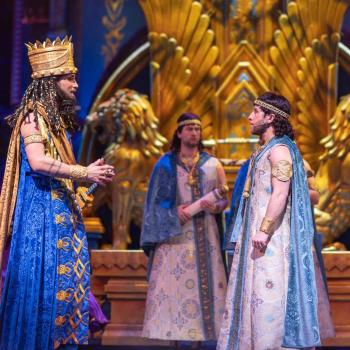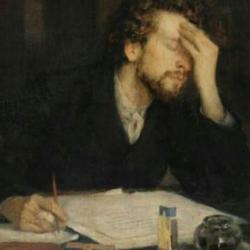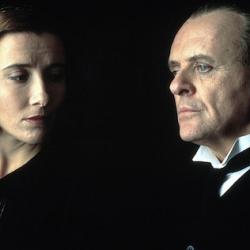Robert S. Miola’s article on Shakespeare’s Rome in the Cambridge Companion to Shakespeare’s History Plays is superb. Here are a couple of excerpts:
?The spectacle of such bloodshed and death defines Shakespeare?s ancient Romans as other, as deeply alien and strange. But Roman violence had other significations for original audiences, imaging forth as well familiar political and religious conflicts. David Kaula has well demonstrated, for example, that Julius Caesar reflects contemporary religious disputes over popish ceremonies, papal authority, reliquary veneration, and the Eucharist. The line between antiquity and modernity shifts constantly in the Rome of Titus Andronicus as well, as Julie Taymor well illustrates in the atemporal juxtapositions of her 2000 film, Titus . In Shakespeare?s play an invading Goth stops to ?gaze upon a ruinous monastery,?Efixing his eye upon the ?wasted building.?EAncient Rome here changes into the familiar landscape of Reformation England.?E At this point, Aaron demands an oath, warning Lucius not to play with ?twenty popish tricks and ceremonies?E(5.1.74-8). ?Ceremony?Eby this time meant ?popish ceremony?Eand Aaron?s mocking ?enacts another cultural paradigm from the later wars of religion.?E
Regarding the political implications of Shakespeare’s Roman plays: ?The Roman Caesar presented an image of royal power that James I appropriated and cultivated for himself. Believing in his absolute, divinely appointed right to rule, James adopted Caesar as his pagan predecessor and model. James?Ecoronation medal depicted him in a laurel wreath with the motto, ?Caesar the heir of the Caesars.?EBanners proclaimed him Augustus Novus. The iconography of royal pageantry further asserted the identification. In his 1604 ceremonial entrance to London James processed through seven arches of triumph. No less a poet than Ben Jonson prophesied that the lasting glory of James would parallel that of ?Augustus?Estate.?E At the same time, James?Ecourt was notoriously dissolute, like something taken from Roman history: ?His court abounded in sexual passions and illicit affairs, to which gossipy ?secret histories?Eand responsible accounts all give witness. Married to Anne of Denmark, James himself had several male lovers. In Whitehall as in Alexandria, a heady mix of sex, power, and money excited and intoxicated. The entertainments lavished upon Christian IV of Denmark during his four-week visit in the summer of 1606 perhaps inspired some scenes of [ Antony and Cleopatra ]. The riotous celebration, H. Neville Davies has noted, also featured all-night revelry, prodigious drinking, and feasts aboard ship?ESuch prodigality was typical of the notoriously extravagant king.”















